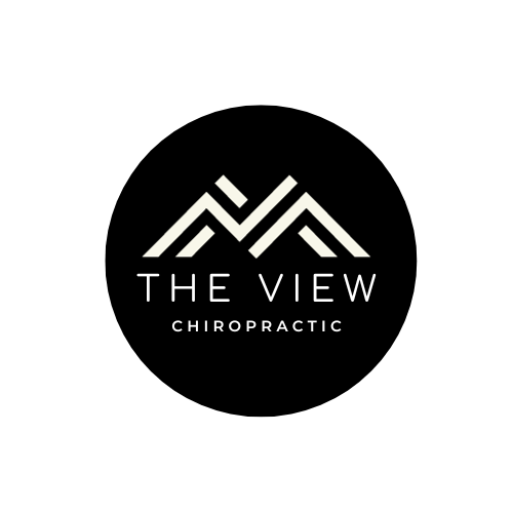Find Fast Relief: Chiropractor for Headache Relief Near Me
Nearly 50 million Americans suffer from chronic headaches, with many reaching for medication as their initial headache relief. What if there was another way? A solution that didn’t involve pills, potential side effects, or masking symptoms while failing to treat the underlying cause. Chiropractic care offers just that—a natural approach to headache relief that addresses the root causes rather than simply blocking pain signals.
Chiropractic care doesn’t just alleviate headaches; it empowers individuals by educating them about their bodies. Patients often develop a deeper understanding of their own health, learning to recognize triggers and implement strategies to prevent headaches from occurring in the first place. For instance, keeping a headache diary can help identify patterns and common culprits, such as certain foods, stressors, or postural habits.
Understanding the Headache-Spine Connection
Understanding the different type of headaches is essential in finding the right treatment.
Headaches are often caused by neck and spinal issues. When the vertabrae in the upper cervical spine, the neck, is misaligned it can irritate the nerves and blood vessels causing a headache. The misalignment of the spine is called subluxation. The relationship between headache and the spine is not coincidental- it’s physiological.
Let’s look a little bit deeper into how this happens. The central nervous system, which constists of the brain and the spinal cord, is protected by bones. The brain is protected by the skull and the spinal cord is protected by the vertabrae also known as your spine. There are hundreds of nerves originating from the spinal cord that run through the entire body. With the brain being the main command center, these nerves are carrying signals between the brain and the rest of the body. Basically, your body is only capable of functioning via these nerves. When the spinal vertabre gets out of its optimal place it can put a pressure on the nerves and cause a lot of neurological problems such as headaches.
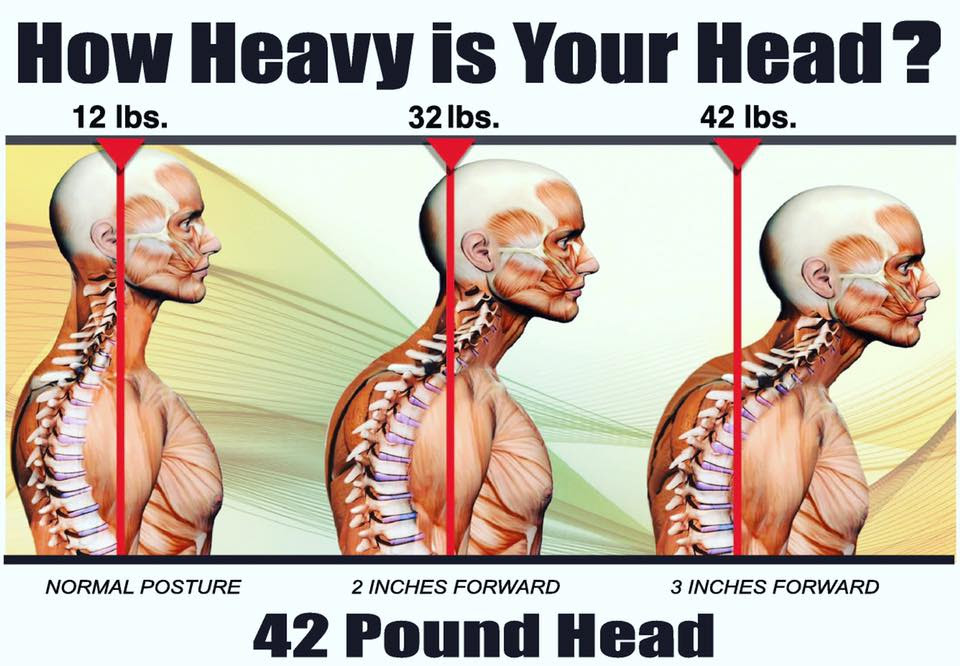
Most people don’t realize that poor posture, particularly the forward head posture many of us adopt while using computers and smartphones, places tremendous strain on the cervical spine. For every inch your head moves forward from its proper alignment, an additional 10 pounds of pressure gets placed on your neck muscles. Those muscles tighten in response, pulling on the base of the skull and creating tension headaches that can become chronic without proper intervention.
Spinal misalignments can also result in migrane headaches, which is explained by the delicate relationship between the blood arteries supplying the brain and the cervical spine (neck). Migraine-related symptomps may be triggered when the spine’s misalignment restricts blood flow.
Types of Headaches Responsive to Chiropractic Care
Not all headaches are created equal, but many types respond well to chiropractic treatment. Understanding which category your headache falls into helps determine the most effective approach.
1. Tension Headaches
One of the forms of headaches is tension headaches which usually manifest as a mild throbbing sensation likened to a constrictive band encircling the head. These typically stem from tense muscles in the neck and shoulders – regions where chiropractic treatments can work wonders. When assessing individuals with tension headaches it is common to discover limitations in movement and sensitive trigger points in the suboccipital muscles located at the lower part of the skull.
Chiropractic adjustments can release these restrictions and reduce muscle tension, often providing immediate relief. One patient who came in with a tension headache that was going on for three days experienced significant relief after just one targeted adjustment to her upper cervical spine.
2. Cervicogenic Headaches
These headaches literally stem from the neck (cervical spine) and are directly caused by disorders or lesions in the cervical spine and its components. Pain typically begins in the neck and radiates to the head, often affecting just one side. These kind of headaches frequently result from whiplash injuries, poor posture, or degenerative conditions affecting the cervical spine.
Chiropractic care is particularly effective for this type of headache because it directly addresses the source of the problem. By restoring proper motion to restricted vertebral segments and reducing nerve irritation, chiropractic adjustments can significantly reduce or eliminate cervicogenic headache.
3. Migraines
While more complex in nature, many migraine sufferers report improvement with regular chiropractic care. Migraines involve neurovascular mechanisms and can be triggered by numerous factors, but vertebral subluxations and muscle tension can be significant contributors for some patients.
Research published in the Journal of Manipulative and Physiological Therapeutics found that chiropractic treatment resulted in sustained reduction of migraine frequency and pain intensity in many study participants.1 While not a cure-all for migraines, chiropractic care can be an important component of a comprehensive management approach.
How Chiropractors Diagnose The Cause of Headache
Before any treatment begins, a thorough assessment is essential. The diagnostic process for headache patients typically includes:
- Detailed health history focusing on headache patterns, triggers, and previous treatments
- Physical examination of posture, spinal alignment, and range of motion
- Examination of the spine and surrounding muscles to identify restrictions and tender areas
- Neurological tests to assess nerve function. We use a comphrensive device in our clininc, called the INSiGHT neuroTECH.
- X-rays or other imaging when necessary to rule out serious conditions or identify structural issues
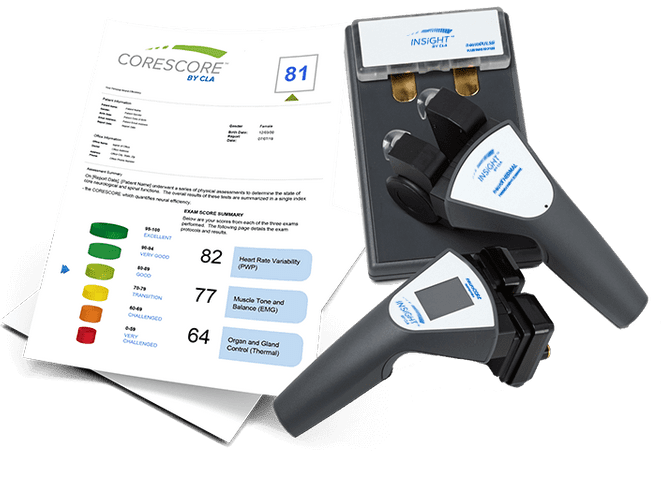
This comprehensive approach allows for precision in treatment planning. I’ve had patients who saw multiple specialists for their headaches without relief, only to discover through our thorough assessment that a subtle misalignment in their upper neck was the primary culprit.
The assessment isn’t just about identifying problems—it’s about understanding the unique patterns in each patient. Headaches might all cause pain, but the underlying mechanisms can vary significantly from person to person.
The detailed assessment enables us to create an individualized treatment plan. We have had patients who had visited multiple specialists for headache treatment without finding relief learned through our detailed assessment that their upper neck misalignment proved to be the main cause of their headaches.
The assessment process goes beyond identifying issues. It also reveals distinct patterns which exist in each patient. Although the common symptom of headache is pain, the underlying causes differ substantially between individual patients.
Chiropractic Adjustment Techniques for Headache Relief
Once the assessment is complete, our patients receive a personalized treatment plan. Dr. John uses several of the chiropractic techniques that have proven to be effective for headache relief:
Spinal Adjustment
The main focus of chiropractic care includes spinal adjustment which involves using a precise technique to correct spinal subluxation and restore mobility and reduce nerve irritation. The treatment of recurring headaches usually focuses on the cervical and upper thoracic spine regions. The adjustments are specific and targeted to the particular vertebral segments which were indentifed during the examination process.
The popping sound that occurs during adjustments is simply the gas release from the joints. Many people believe that the sound is bones cracking which is not true. Most patients experience quick relief from headaches after cervical adjustments, however, some may develop mild soreness similar to what you feel after exercise.
Soft Tissue Therapy
Tight muscles often accompany spinal misalignments, creating a cycle of pain and restriction. Various soft tissue techniques can be employed to address these issues:
- Trigger point therapy targets specific points of muscle tension
- Myofascial release works on the connective tissue surrounding muscles
- Therapeutic massage improves blood flow and reduces muscle tension
These techniques complement spinal adjustments by addressing the muscular component of headaches. The suboccipital muscles at the base of the skull are particularly important in headache treatment, as they can refer pain into the head when tight or containing trigger points.
Lifestyle Modifications to Enhance Chiropractic Results
While chiropractic adjustments can provide significant relief, lasting results typically require addressing lifestyle factors that contribute to headaches:
Posture Correction
Poor posture—particularly forward head posture—places tremendous strain on the cervical spine and associated muscles. This strain translates into tension headaches and can exacerbate other headache types.
Simple postural adjustments can make a big difference. When working at a computer, make sure that your monitor is at eye level, your shoulders are relaxed, and your feet are flat on the floor. Take regular breaks to stretch and reset your posture.
In addition, chiropractors may suggest specific exercises tailored to strengthen the neck and upper back muscles, which further support spinal alignment. We frequently suggest the “chin tuck” exercise to patients with forward head posture. This basic movement helps build the deep neck flexors which maintain proper head alignment. It may not be the most attractive technique but it delivers results and that is what counts when treating ongoing headaches.
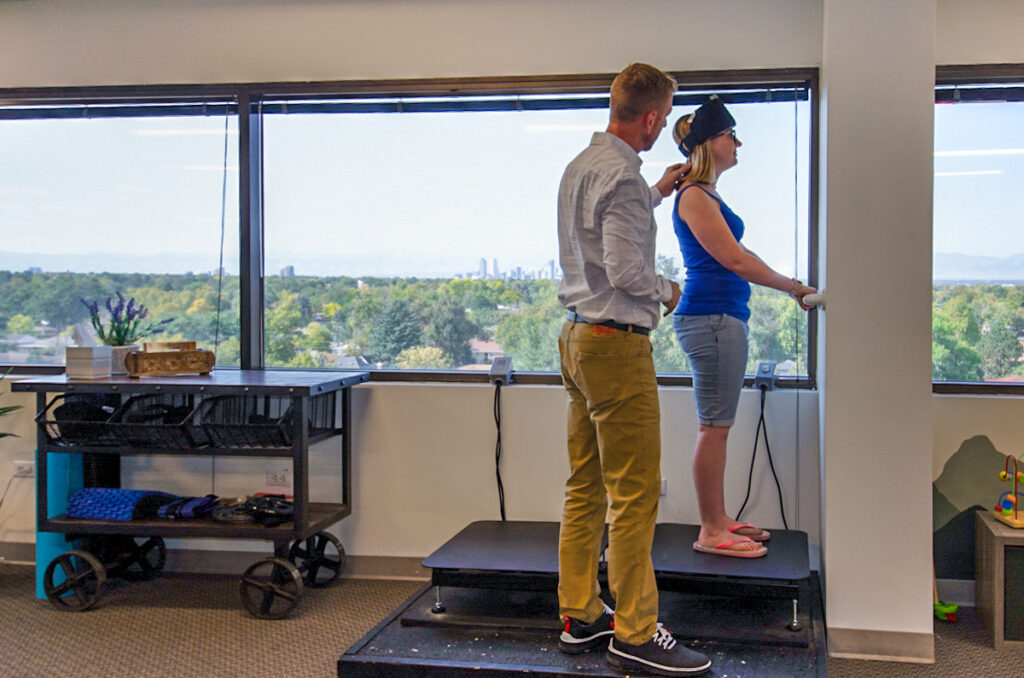
Ergonomic Improvements
The conditions of your workplace either help or harm your spinal health. The following ergonomic adjustments should be implemented:
- Adjustable chairs with proper lumbar support
- Standing desks or adjustable-height workstations
- Phone headsets to avoid neck strain during calls
These modifications are complementing the chiropractic care while preventing muscle tension and misalignments that lead to headaches.
Since we spend an average of 6-9 hours in the bedroom, it is also worth mentioning the importance of proper pillows to avoid straining your neck while you sleep.
Stress Management
Stress is a major headache trigger that creates a vicious cycle: stress causes muscle tension, which leads to headaches, which increase stress, and so on. Breaking this cycle requires intentional stress management techniques.
Deep breathing, meditation, and progressive muscle relaxation can all help reduce the physical manifestations of stress. Even five minutes of deep breathing can activate the parasympathetic nervous system and begin to release muscle tension.
Other Lifestyle Factors
There are other factors to consider for causing headaches such as hydration and nutrition. Dehydrations is one common trigger for headaches so we often remind patients to drink half of your body weight in ounces of water. Adding mineral drops to your water ensures proper hydration. Certain foods can also be the culprit of headaches. It is common to develop headaches after consuming foods high in sugar (sugar headache), or some people may have gluten induced headaches.
Women should also keep track of their headaches to take note whether their hormonal changes trigger migranes or tension headaches. Knowing the date of cycles, or hormone fluctuations during peri-, and menopause can prepere women for headache prevention.
A collaborative approach involving regular chiropractic care, self-awareness and lifestyle modifications allows patients to take charge of their health. Remember, the ultimate goal is not just to reduce pain and manage symptoms but to lead a lifestyle that allows optimal health and well-being.
Research Supporting Chiropractic for Headaches
The evidence base for chiropractic treatment of headaches continues to grow. Several notable studies have demonstrated its effectiveness:
- A 2017 report published in the Journal of Manipulative and Physiological Therapeutics analyzed 21 different studies and concluded that spinal manipulation was effective in treating cervicogenic headaches and migraines.2
- Another study in The Spine Journal found that participants who received chiropractic care for cervicogenic headaches experienced significant improvement in headache intensity and frequency compared to those who received light massage.3
- The Cochrane Database of Systematic Reviews, known for its rigorous evaluation standards, reported that spinal manipulation is effective treatment option for migrane and chronic tension-type headache.4
While more research is always beneficial, the existing evidence supports that spinal adjustments can improve headache symptoms.
Comparing Chiropractic to Conventional Headache Treatments
Conventional headache treatments typically rely on medications to treat symptoms. While this approach can provide temporary relief, it comes with limitations:
- Medications treat symptoms without addressing underlying causes
- Over-reliance on pain medications can lead to rebound headaches
- Many headache medications come with unwanted side effects
- Long-term medication use may have health consequences
Chiropractic offers several advantages as an alternative, or complementary approach:
- Addresses structural causes of headaches
- No pharmaceutical side effects
- Improves overall spinal health and function
- Empowers patients with self-care strategies
- Preventive rather than just reactive
That said, chiropractic isn’t about rejecting all conventional approaches. For some patients, the best results come from integrated care that combines the strengths of different treatment modalities. We’ve worked with many patients who use chiropractic as their primary headache management approach but keep appropriate supplements on hand for breakthrough symptoms.
When to Seek Chiropractic Care for Headaches
If you’re considering chiropractic for headaches, here are some guidelines for you:
- After ruling out serious underlying conditions with your primary care provider
- When headaches are recurrent rather than isolated incidents
- If headaches seem related to neck pain or stiffness
- When conventional treatments haven’t provided adequate relief
- As a preventive measure if you notice early signs of developing headache patterns
The sooner you address the underlying spinal issues, the better your chances of avoiding chronic headache patterns.
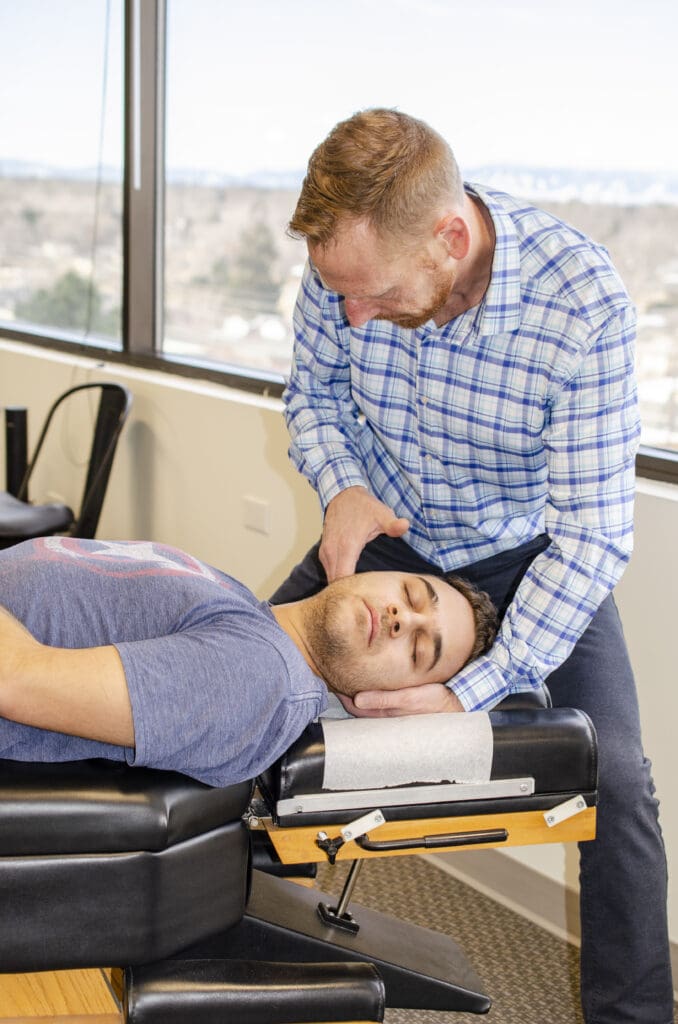
Final Thoughts
Chiropractic care offers a drug-free, natural approach to headache treatment that addresses causes rather than just symptoms. By restoring proper spinal alignment and function, reducing muscle tension, and providing guidance on posture and lifestyle factors, our chiropractic office helps many patients find a solution for various types of headaches.
If you’re tired of relying on medications that mask symptoms without providing long-term solutions, chiropractic care is worth considering. Your spine and nervous system influence every aspect of your health—including those painful headaches that affect your quality of life. Taking care of your spine isn’t just about avoiding pain; it’s about optimizing your body’s natural ability to function well.
While no treatment works for everyone, many headache sufferers find that chiropractic care provides relief where other approaches have failed. The best way to determine if it might help you is to schedule a thorough assessment with Dr. John who thinks outside the box to find solutions for your ailments.
Don’t let headaches become a chronic issue. Schedule a complimentary consultation with our qualified chiropractic doctor today for effective relief. Visit our Denver office, conveniently located near I-70 & Quebec Street.
References:
- A randomized controlled trial of chiropractic spinal manipulative therapy for migraine https://pubmed.ncbi.nlm.nih.gov/10714533/
- Chiropractic spinal manipulative therapy for cervicogenic headache: a single-blinded, placebo, randomized controlled trial. National Library of Medicine. https://pmc.ncbi.nlm.nih.gov/articles/PMC5525198/
- Dose-response and efficacy of spinal manipulation for care of cervicogenic headache: a dual-center randomized controlled trial. October 2018. The Spine Journal. https://pubmed.ncbi.nlm.nih.gov/29481979/
- Non-invasive physical treatments for chronic/recurrent headache. July 2004. Chochrane Library. https://www.cochranelibrary.com/cdsr/doi/10.1002/14651858
Health Articles You Might Be Interested In:
Chiropractic, Holistic Health, Posture
Chiropractic Treatment for Headaches: A Drug-Free Alternative
Find Fast Relief: Chiropractor for Headache Relief Near MeNearly 50 million Americans […]
Holistic Health
The Link Between Posture and Productivity: Tips for Denver Office Workers
Table of Contents Denver Office Posture Tips In the fast-paced world of […]
Holistic Health
5 Natural Ways to Relieve Back Pain Without Medication
5 Natural Ways to Relieve Back Pain Without Medication Back pain. It’s […]
Recipes
Healthy Autumn Recipe
Sweet Potato Soup As the crisp autumn air begins to settle in, […]
Holistic Health
How Chiropractic Care Can Boost Your Immune System
In a world where immune health is on everyone’s mind, it’s time […]
Holistic Health
The Vibrating Path to Health: 8 Benefits of Whole-Body Vibration Therapy
Ready. Set. Vibe. Table of ContentsReady. Set. Vibe.Understanding Vibration MachinesAdditional Health Benefits […]
